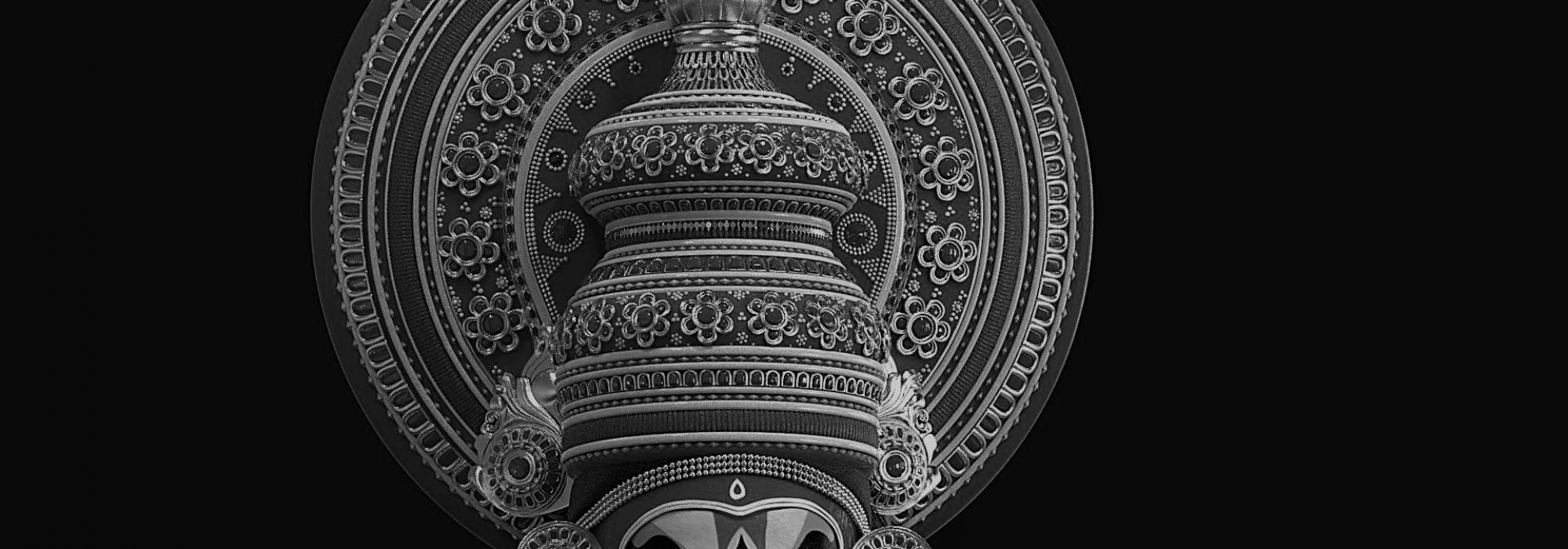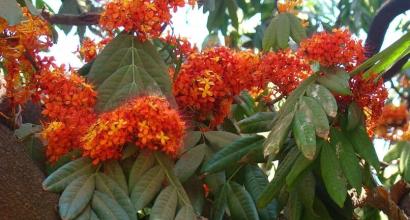ಪ್ರತಿಯೊಂದು ಕಲೆಗೂ ತನ್ನದೇ ಆದ ಶೈಲಿಯಿರುತ್ತದೆ. ಅಷ್ಟೇಕೆ, ಪ್ರತಿಯೊಬ್ಬ ವ್ಯಕ್ತಿಗೂ ಜೀವಿಗೂ ಅಸ್ತಿತ್ವಕ್ಕೂ ತನ್ನದೇ ಆದ ಶೈಲಿಯಿರುವಾಗ ವ್ಯಕ್ತಿಜೀವನಸಮಷ್ಟಿಯೆನಿಸಿದ ಸಮಾಜವೊಂದರ ವಿಕಸಿತವೂ ಮನೋಹರವೂ ಆದ ಕಲಾಪ್ರಕಾರವೊಂದಕ್ಕೆ ಶೈಲಿಯ ಅನನ್ಯತೆಯಿಲ್ಲವೆಂದರೆ ಹೇಗೆ? ಹೀಗಾಗಿಯೇ ನರ್ತನಕಲೆಗೂ ಶೈಲಿಗಳ ಅನನ್ಯರೂಪಗಳುಂಟು; ಮತ್ತಿದಕ್ಕೆ ಭಾರತೀಯನೃತ್ಯಗಳು ಅಪವಾದವೇನಲ್ಲ.
ಜಗತ್ತಿನ ಅಸಂಖ್ಯನರ್ತನಪ್ರಕಾರಗಳ ಪೈಕಿ ಅತಿಹೆಚ್ಚಿನ ಸಂಖ್ಯೆಯ ಜಾನಪದ ಹಾಗೂ ಅಭಿಜಾತನರ್ತನಗಳ ಸಾಂಪ್ರದಾಯಿಕಪರಂಪರೆ ಉಳಿದಿರುವುದು ನಮ್ಮ ದೇಶದಲ್ಲಿಯೇ. ಮತ್ತೂ ಸ್ಪಷ್ಟವೂ ಶಾಸ್ತ್ರೀಯವೂ ಆದ ರೀತಿಯಲ್ಲಿ ಹೇಳುವುದಾದರೆ ಅಸಂಖ್ಯದೇಶೀನರ್ತನಗಳು ನಮ್ಮ ದೇಶದ ಹೆಮ್ಮೆಯಾಗಿವೆ ಮತ್ತು ಇವುಗಳಲ್ಲಿ ಸಾಮುದಾಯಿಕನರ್ತನಗಳೂ ಆಭಿಜಾತೀಯನರ್ತನಗಳೂ ಸೊಗಸಾಗಿ ಅಣಿಗೊಂಡಿವೆ. ಸಾಮುದಾಯಿಕನರ್ತನಗಳನ್ನೇ ಆಧುನಿಕರು ಜಾನಪದನರ್ತನಗಳೆಂದು ಗುರುತಿಸುತ್ತಾರೆ. ಇವುಗಳ ಆಹಾರ್ಯವಂತೂ ಅತಿಶಯವಾಗಿರುತ್ತದೆ. ಉಳಿದಂತೆ ಆಂಗಿಕಾಭಿನಯದ್ದೇ ಪಾರಮ್ಯ. ವಾಚಿಕವು ಗೇಯರೂಪದಲ್ಲಿ ಬಲುಚೆಲುವೂ ಸರಳವೂ ಆದ ಸಶಕ್ತ-ಸೋತ್ಸಾಹಕ್ರಮದ್ದಾಗಿರುತ್ತದೆ. ಇದಕ್ಕೆ ಕೂಡಿಬರುವ ವಾದ್ಯಗಳಾಗಲಿ ಮಾತು-ಧಾತುಗಳ ಮಾರ್ಮಿಕತೆಯಾಗಲಿ ಅಸಂಕೀರ್ಣ, ಅಕೃತಕ. ಆದರೆ ಸಾತ್ತ್ವಿಕಾಭಿನಯದ ವಿವರಗಳು ಕಡಮೆ. ಒಟ್ಟಂದದ ಓಘ-ಓಜಸ್ಸುಗಳಾಗಲಿ ಮಾರ್ದವ-ಮಾಧುರ್ಯಗಳಾಗಲಿ ಅಸಾಧಾರಣವೇ ಹೌದಾದರೂ ಇತಿವೃತ್ತವು ಪ್ರಾಯಿಕವಾಗಿ ಇಲ್ಲದ ಕಾರಣ, ಏಕಹಾರ್ಯದ ಆದ್ಯಂತಪ್ರಗಲ್ಭತೆಯಿಲ್ಲದ ಕಾರಣ ಸಾಮುದಾಯಿಕನರ್ತನಗಳಲ್ಲಿ ಶುದ್ಧರಸಗಳ ಸಮಗ್ರಾನುಭೂತಿಗಿಂತ ರಸಧರ್ಮಗಳ ಹಾಗೂ ಪ್ರೀತಿ-ವಿಸ್ಮಯಭಾವಜನಕತ್ವದ ಪರಿಣಾಮವೇ ಕಾಣಸಿಗುವಂಥದ್ದು. ಮುಖ್ಯವಾಗಿ ಇಲ್ಲಿಯ ಆಂಗಿಕಪಾರಮ್ಯದಲ್ಲಾಗಲಿ ಉತ್ಕಂಠಿತವಾಚಿಕವಿಧಾನದಲ್ಲಾಗಲಿ ಸೊಗಸಿದ್ದರೂ ವೈವಿಧ್ಯ ಕಡಮೆ. ಕಸುವಿದ್ದರೂ ಸಂಕೀರ್ಣತೆ ಕಡಮೆ. ಹೀಗಾಗಿಯೇ ಇವು ಲೋಕದಲ್ಲಿ ನೃತ್ಯಗಳೆಂದೆನಿಸಿದ್ದರೂ ಇಲ್ಲಿ ನೃತ್ತಬಂಧವೇ ಹೆಚ್ಚು; ಮತ್ತು ಈ ನೃತ್ತಗಳಲ್ಲಿಯೂ ಕೆಲವೇ ಹೆಜ್ಜೆಗಳ, ಕೆಲವೇ ಚಾರಿಗಳ, ಕೆಲವೇ ನೃತ್ತಹಸ್ತಗಳ[1] ಹಾಗೂ ಕೆಲಕೆಲವೇ ಕರಣ-ಕರಣಾಂಶ-ಮಂಡಲ-ಪಿಂಡೀ-ಅಂಗಹಾರಕಲ್ಪಗಳ ವಿವರಗಳುಂಟು. ಪ್ರಧಾನತಃ ಇಂಥ ಸಾಮುದಾಯಿಕನರ್ತನಗಳ ಜೀವಾಳವೂ ಆಕರ್ಷಣೆಯೂ ಇರುವುದು ಅವುಗಳ ಆಂಗಿಕಭಾಗದಲ್ಲಿ ತೋರುವ ದೇಹಾದ್ಯಂತದ ಅಭಿವ್ಯಕ್ತಿಯಲ್ಲಿ, ರೇಚಕಗಳ ಕಾವ್ಯಾತ್ಮಕತೆಯಲ್ಲಿ ಮತ್ತು ಭಾವಗಳ ತಾಜಾತನದ ಸ್ಫೂರ್ತಿಯಲ್ಲಿ.
ಇತಿವೃತ್ತದ ಹಾಗೂ ವಾಚಿಕದ ಸಂಭಾಷಣಾತ್ಮಕತೆ ಮಿಗಿಲಾದಾಗ, ಬಹುಹಾರ್ಯತ್ವವು ವಿಜೃಂಭಿಸಿದಾಗ, ಆಹಾರ್ಯವೈಭವವು ಗರಿಗೆದರಿದಾಗ ಸಾಮುದಾಯಿಕನರ್ತನಗಳೇ ಸಾಂಪ್ರದಾಯಿಕದೇಶೀರಂಗಭೂಮಿಯ ರೂಪ ತಾಳಿದ ನಾಟ್ಯಗಳೆನಿಸುತ್ತವೆ. ಈ ವಿಸ್ತರಣದ ಚರ್ಚೆಯು ಸದ್ಯದ ಲೇಖನವ್ಯಾಪ್ತಿಗೆ ಬಹಿರ್ಭೂತವಾದುದು.
ಇನ್ನು ನಮ್ಮ ದೇಶದ ಆಭಿಜಾತೀಯನರ್ತನಗಳನ್ನು ಕಂಡಾಗ ಇವೆಲ್ಲ ನಿರಪವಾದವಾಗಿ ಭರತಾಭಿನವಗುಪ್ತಾದಿಗಳು ಗುರುತಿಸಿರುವ ರೂಪಕ-ಉಪರೂಪಕಗಳ ಶಾಖೆಗಳಲ್ಲಿಯೋ ರೂಪಾಂತರಗಳಲ್ಲಿಯೋ ತೋರುತ್ತವೆನ್ನಬೇಕು. ಇವುಗಳೂ ಸಾಮುದಾಯಿಕನರ್ತನಗಳೂ ಮೂಲತಃ ಭರತಾಗಮದ ವ್ಯಾಕರಣವನ್ನೇ ಹೊಂದಿವೆಯಾದರೂ ಆಭಿಜಾತೀಯನರ್ತನಗಳಲ್ಲಿ ಆಂಗಿಕ-ಸಾತ್ತ್ವಿಕಗಳೆರಡೂ ಹದವಾಗಿ ಬೆರೆತಿದ್ದು ಏಕಹಾರ್ಯವೆನಿಸುವ ಬಗೆಯಲ್ಲಿ ಇತಿವೃತ್ತದ ನಿರೂಪಣೆಯನ್ನು ಮಾಡಬಲ್ಲುವಾಗಿವೆ. ಅಲ್ಲದೆ ನಾಟ್ಯಪದ್ಧತಿಯೆನಿಸುವ ದಶರೂಪಕವಿಧಾನದ ಸಂಕೀರ್ಣವೂ ಬಹುಹಾರ್ಯವೂ ಆದ ಜಾಡನ್ನು ತುಳಿಯದೆ ಸರಳ-ಸಂಕ್ಷಿಪ್ತಕಥಾತಂತುವನ್ನು ಒಂದು ಅಥವಾ ಕೆಲವೇ ಭೂಮಿಕೆಗಳ / ಸಂದರ್ಭಗಳ ಸವಿವರ-ಸುವಿಶದವ್ಯಾಖ್ಯಾನರೂಪದಲ್ಲಿ ನಿರ್ವಹಿಸುವುದೇ ಇಲ್ಲಿಯ ವೈಶಿಷ್ಟ್ಯವೆನಿಸಿದೆ. ಅಂದರೆ ನೃತ್ತಪ್ರಧಾನವಾದ ಸಾಮುದಾಯಿಕನರ್ತನಗಳಲ್ಲಿಯೂ ಘಟನಾಪ್ರಧಾನವಾದ ಮಾರ್ಗ-ದೇಶೀನಾಟ್ಯಪದ್ಧತಿಗಳಲ್ಲಿಯೂ ಅಷ್ಟಾಗಿ ಕಾಣಸಿಗದ—ಇದೀಗ ನಮ್ಮ ಅಭಿಜಾತಸಂಗೀತದಲ್ಲಿ ಸಾಹಿತ್ಯಭಾಗವೊಂದರ ವಿನಿಕೆಯಲ್ಲಿ ಮೂಡಿಬರುವ ಬಗೆಬಗೆಯಾದ ’ಸಂಗತಿ’ಗಳೂ ನೆರವಲ್-ಬೋಲ್ತಾನಗಳಂಥ ಸಂದರ್ಭದಲ್ಲಿ ಹೊಮ್ಮುವ ಸ್ವರ-ಗತಿವೈವಿಧ್ಯಗಳೂ ಹೇಗೆ ಭಾಷಿಕವಾಚ್ಯಾಂಶವೊಂದರ ಸಮಸ್ತಧ್ವನಿಗಳನ್ನೂ ಎಳೆ-ಎಳೆಯಾಗಿ ಧ್ವನಿಶೀಲವಾಗಿ ವಿಸ್ತರಿಸುತ್ತವೆಯೋ ಹಾಗೆ ನಿರೂಪಿಸುವಂಥ—’ಸಂಚಾರಿಭಾವ’ಗಳ ಮೂಲಕ ತಮ್ಮ ಪ್ರಕ್ರಿಯೆಯ ಅನನ್ಯತೆಯನ್ನು ರಸಪೂರ್ಣವಾಗಿ ತೋರುವುದು ಆಭಿಜಾತೀಯನರ್ತನಗಳ ಪ್ರಧಾನಶೈಲಿಯಾಗಿದೆಯೆನ್ನಬಹುದು. ಇಂಥ ಪದ್ಧತಿಯನ್ನೇ ಶಾಸ್ತ್ರೀಯಪರಿಭಾಷೆಯಲ್ಲಿ ನೃತ್ಯವೆನ್ನುತ್ತಾರೆ. ಈ ಲೇಖನದಲ್ಲಾದರೂ ’ನೃತ್ಯ’ ಎಂಬ ಶಬ್ದಕ್ಕೆ ನಮ್ಮ ಶಾಸ್ತ್ರಗಳಲ್ಲಿರುವ ವಿಶಿಷ್ಟವೂ ನಿರ್ದಿಷ್ಟವೂ ಆದ ಇಂಥ ಅರ್ಥನಿಶ್ಚಿತತೆಯನ್ನು ಮನಗಂಡ ಕಾರಣಾದಿಂದಲೇ ಲೋಕಸಾಮಾನ್ಯವಾದ ಕುಣಿತ ಎಂಬರ್ಥದ ‘dance’ ಶಬ್ದವಾಚಕವಾಗಿ ’ನರ್ತನ’ಪದವನ್ನೂ ಆಂಗಿಕ-ಸಾತ್ತ್ವಿಕಗಳ ವಿಶಿಷ್ಟಪಾರಮ್ಯವಿದ್ದು ಪ್ರಧಾನವಾಗಿ ಏಕಹಾರ್ಯವೆನಿಸುವ ಹಾಗೂ ನಾಟ್ಯಪದ್ಧತಿಗಿಂತಲೂ ಭಿನ್ನವಾಗಿರುವ ’ಸಂಚಾರಿ’ಪರಿಪ್ಲುತವಾದ ಅಭಿವ್ಯಕ್ತಿಕ್ರಮವನ್ನುಳ್ಳ ಅಭಿನಯವಿಧಾನವನ್ನು ನಿರ್ದೇಶಿಸಲು ’ನೃತ್ಯ’ವೆಂಬ ಪದವನ್ನೂ ಬಳಸಲಾಗಿದೆ. ನಮ್ಮ ಸದ್ಯದ ಚಿಂತನವಿರುವುದಾದರೂ ಈ ಪದ್ಧತಿಯಲ್ಲಿ ಕಂಡುಬರುವ ಶೈಲಿಗಳ ಅನನ್ಯತೆಗಳನ್ನು ಕುರಿತೇ ಆಗಿದೆ.
ಚತುರ್ವಿಧಾಭಿನಯಕ್ರಮದ ವಿಶಿಷ್ಟತೆಯೇ ನೃತ್ಯ-ನಾಟ್ಯಗಳ ವಿವಿಧಶೈಲಿಗಳಲ್ಲಿ ಎದ್ದುತೋರುವ ಅನನ್ಯತೆಯೆನ್ನಬೇಕು. ಆದರೆ ಅಭಿಜಾತನೃತ್ಯಪದ್ಧತಿಯೊಂದರ ಶೈಲಿಯ ಅನನ್ಯತೆಯೆಂದರೆ ಅದು ಪ್ರಧಾನವಾಗಿ ಆಂಗಿಕ-ವಾಚಿಕಗಳದ್ದೇ ಆಗಿದೆ. ಏಕೆಂದರೆ ನಾಟ್ಯಪದ್ಧತಿಗೂ ಸಾಮುದಾಯಿಕನರ್ತನಪದ್ಧತಿಗೂ ಅತ್ಯಂತ ಅನಿವಾರ್ಯವೆಂದು ತೋರುವಂಥ ಆಹಾರ್ಯವು ನೃತ್ಯಪದ್ಧತಿಯಲ್ಲಿ ಆ ಪ್ರಮಾಣದ ಮಹತ್ತ್ವವನ್ನು ಗಳಿಸದು. ದಿಟವೇ, ಆಹಾರ್ಯಕ್ಕೆ ತನ್ನದೇ ಆದ ವೈಶಿಷ್ಟವಿದೆ; ನಮ್ಮ ದೇಶೀಯವೂ ಅಭಿಜಾತವೂ ಆದ ವಿವಿಧನೃತ್ಯಪದ್ಧತಿಗಳೆನಿಸಿದ ಸದಿರ್, ಕೂಚಿಪೂಡಿ, ಮೋಹಿನೀಆಟ್ಟಂ, ಒಡಿಸ್ಸಿ, ಕಥಕ್, ಮಣಿಪುರಿ, ಗೌಡೀಯ, ಸತ್ರೀಯ ಹಾಗೂ ಇದೀಗ ನೆಲೆ ಕಂಡುಕೊಂಡಿರುವ ಏಕವ್ಯಕ್ತಿಯಕ್ಷಗಾನಗಳಲ್ಲಿ ತಮ್ಮ ತಮ್ಮವೇ ಆದ ವೇಷ-ಭೂಷಣಗಳ, ಬಣ್ಣ-ಬಂಗಾರಗಳ ಸೊಗಸಿದೆ. ಇಂತಾದರೂ ಅವನ್ನೆಲ್ಲ ಧರಿಸದೆ ಕೇವಲ ನಿರ್ವಿಶೇಷಸಾಮಾನ್ಯನೇಪಥ್ಯದಲ್ಲಿ ನರ್ತಿಸುವಾಗ ಕೂಡ ಆಯಾ ನೃತ್ಯಪದ್ಧತಿಗಳ ವಿಶಿಷ್ಟಶೈಲಿಗಳು ತೋರಿಕೊಂಡಾಗ ಮಾತ್ರ ಅವುಗಳ ಅನನ್ಯತೆಗೆ ಗಟ್ಟಿತನ ಬರುತ್ತದೆ. ಇಂತಾದಲ್ಲಿ ಎಲ್ಲಕ್ಕಿಂತ ಮಿಗಿಲಾದ ಸಾತ್ತ್ವಿಕಾಭಿನಯಕ್ಕೇಕೆ ಅಗ್ರತಾಂಬೂಲವನ್ನಿತ್ತಿಲ್ಲವೆಂಬ ಪ್ರಶ್ನೆ ಹುಟ್ಟದಿರದು. ಇದಕ್ಕಾದರೂ ಸಮರ್ಥಸಮಾಧಾನವಿಲ್ಲದಿಲ್ಲ. ಸಾತ್ತ್ವಿಕಾಭಿನಯವು ಅತ್ಯಂತ ಮೂಲಭೂತವೂ ಅಮೂರ್ತವೂ—ಆ ಕಾರಣದಿಂದಲೇ ವಿಶ್ವಜನೀನವೂ—ಆಗಿರುವುದರಿಂದ ಇಲ್ಲಿ ಅನನ್ಯತೆ-ವಿಶಿಷ್ಟತೆಗಳಿಗೆ ಮಿಗಿಲಾದ ಎಡೆಯಿಲ್ಲ. ಸದಿರ್-ಕ್ರಮದ ರೌದ್ರಕ್ಕಾಗಲಿ, ಕಥಕ್-ಕ್ರಮದ ಹಾಸ್ಯಕ್ಕಾಗಲಿ, ಮಣಿಪುರೀ-ಕ್ರಮದ ಕರುಣಕ್ಕಾಗಲಿ ಅಥವಾ ಇವೆಲ್ಲವುಗಳ ಯಾವುದೋ ಒಂದು ರಸಾಶ್ರಿತವಾದ ಸತ್ತ್ವೋದ್ರೇಕಕ್ಕಾಗಲಿ ವ್ಯತ್ಯಾಸವೆಲ್ಲಿದೆ? ಅಭಿನಯದರ್ಪಣದ ಮಂಗಳಶ್ಲೋಕದಲ್ಲಿ ಸಾಕ್ಷಾತ್ ಶಿವನನ್ನೇ ’ಸಾತ್ತ್ವಿಕ’ ಎನ್ನಲಾಗಿದೆ. ಇಂಥ ಶಿವನಲ್ಲಿ ನಾನಾತ್ವವಿರಲು ಸಾಧ್ಯವೇ? ಅದೇನಿದ್ದರೂ ಶಿವೇತರದಲ್ಲಷ್ಟೇ ಸಾಧ್ಯ. ಹೀಗಾಗಿ ನಮ್ಮ ಮೊದಲಿನ ನಿಲವಿಗೆ ಭಂಗ ಬಾರದು.
ಆಂಗಿಕ-ವಾಚಿಕಗಳ ಅನನ್ಯತೆಯೇ ನೃತ್ಯಪದ್ಧತಿಯೊಂದರ ಶೈಲಿಯ ವಿಶಿಷ್ಟತೆಯೆಂಬುದರಲ್ಲಿ ಕೂಡ ಆಂಗಿಕಕ್ಕೇ ಅಗ್ರತಾಂಬೂಲ. ಕಾರಣ ಸುವೇದ್ಯ : ಇದು ದೇಹವಿಕ್ಷೇಪವನ್ನೇ ಪ್ರಧಾನವಾಗಿ ಉಳ್ಳ ನರ್ತನಕಲೆಯಾದುದರಿಂದ ಮೊದಲು ಆಂಗಿಕವೇ ಬರಬೇಕು. ವಾಚಿಕಕ್ಕೆ ತದನಂತರದ ಮಹತ್ತ್ವವಾದರೂ ಇದರ ಪಾತ್ರ ಆಹಾರ್ಯದಷ್ಟು ಗೌಣವಲ್ಲ[2]. ಏಕೆಂದರೆ ವಾಚಿಕದ ವಲಯದೊಳಗೆ ಬರುವ ಮಾತು-ಧಾತುಗಳ ಮಿಶ್ರಣವೆನಿಸಿದ ಗೇಯವೂ ಇಲ್ಲಿಯ ಧಾತುವಿನಲ್ಲಿ ನೆಲೆಗೊಂಡ ಶ್ರುತಿ-ಲಯ-ಸ್ವರ-ತಾಳಗಳೂ ಮಾತು ನಿಕ್ಷೇಪಿಸಿಕೊಂಡ ಛಂದೋಗತಿ ಮತ್ತು ವರ್ಣಾಕ್ಷರಸಂಗೀತಗಳೂ ಇದರೊಟ್ಟಿಗೆ ಬರುವ ಆತೋದ್ಯವೂ (ತತ-ಸುಷಿರ-ಘನ-ಅವನದ್ಧವಾದ್ಯಗಳ ವಿಶಿಷ್ಟಮೇಳನ) ನೃತ್ಯಪದ್ಧತಿಯೊಂದರ ಆಂಗಿಕವನ್ನು ಸಾಕಷ್ಟು ಪ್ರಭಾವಿಸುತ್ತವೆ. ಉದಾಹರಣೆಗೆ ಕಥಕ್-ನೃತ್ಯದ ಹಿಂದೂಸ್ತಾನೀಸಂಗೀತ, ಸದಿರ್-ನೃತ್ಯದ ಕರ್ಣಾಟಕಸಂಗೀತ (ವಿಶೇಷವಾಗಿ ಮುದ್ದುಸ್ವಾಮಿದೀಕ್ಷಿತರ ಶಿಷ್ಯರಾದ ತಂಜಾವೂರು ಸಹೋದರರು ತಮ್ಮ ಗುರುಗಳ ಗಣಿತಪರಿಷ್ಕಾರದ ತಾಳಪ್ರಧಾನಸಂಗೀತದ ಜ್ಯಾಮಿತೀಯವಿಕಟತೆಯನ್ನು ಇಲ್ಲಿಯ ಜತಿ-ಸ್ವರ, ಪದವರ್ಣ, ಶಬ್ದ, ತಿಲ್ಲಾನಾದಿಗಳಲ್ಲಿ ಅಳವಡಿಸಿದ ಬಗೆ ಗಮನಾರ್ಹ), ಒಡಿಸ್ಸಿಯ ದಕ್ಷಿಣೋತ್ತರಸಂಗೀತಕ್ರಮಗಳ ಹದ (ಕರ್ಣಾಟಕಸಂಗೀತದ ರಾಗಗಳನ್ನು ಹಿಂದೂಸ್ತಾನೀಶೈಲಿಯಲ್ಲಿ ನಿರೂಪಿಸುವ ನವುರು), ಮೋಹಿನೀಆಟ್ಟಂ ಅವಲಂಬಿಸುವ ಸೋವಾನಸಂಗೀತದ ವಿಳಂಬಗತಿ-ಜಾರುಗಮಕಗಳು, ಕೂಚಿಪೂಡಿಯ ತಾರಕಶ್ರುತಿಬದ್ಧವಾಗಿದ್ದರೂ ಪರಮಶ್ರವಣಾಭಿರಾಮವಾದ ಭಾವಪ್ರಧಾನಕರ್ಣಾಟಕಸಂಗೀತ (ಮತ್ತಿದರಲ್ಲಿ ಬರುವ ಆಯ್ದ ರಾಗಗಳ ಸ್ವತಂತ್ರಿತವಾದ ವಿನಿಕೆ; ಉದಾ: ನಿಷಾದಚ್ಛಾಯೆಯುಳ್ಳ ಮೋಹನ, ಪಂಚಮಸ್ವರವಾಸಿತವಾದ ಹಿಂದೋಳ ಇತ್ಯಾದಿ) ಮುಂತಾದುವು ಗಮನಾರ್ಹ. ಆತೋದ್ಯಕ್ರಮವಾದರೂ ಇಷ್ಟೇ: ಕಥಕ್ ಬಳಸುವ ತಬಲಾ-ಸಾರಂಗೀ, ಸದಿರ್ ಅಳವಡಿಸಿಕೊಂಡ ಮೃದಂಗ, ಒಡಿಸ್ಸಿಯ ಪಖವಾಜ್-ಬಾಂಸುರಿ, ಮೋಹಿನೀಆಟ್ಟಂ ಅವಲಂಬಿಸುವ ಶುದ್ಧಮರ್ದಳಂ, ಯಕ್ಷಗಾನದ ಚೆಂಡೆ-ಮದ್ದಳೆ, ಮಣಿಪುರಿಯ ಕೋಲ್ ಮುಂತಾದವುಗಳ ಶ್ರುತಿ-ಲಯಗಳೂ ಗಮಕ-ಪಾಟಾಕ್ಷರಗಳೂ ಅವಿಸ್ಮಯರಮಣೀಯವಾದ ಅನನ್ಯತೆಯನ್ನು ತಂದಿವೆ. ಇನ್ನು ’ಮಾತು’ವಿನ ಬಗೆಗೆ ಬಂದರೆ ಅದು ಈಚೆಗೆ ಬಲುಮಟ್ಟಿಗೆ ನಿರ್ವಿಶಿಷ್ಟವಾಗುತ್ತಿದೆಯಾದರೂ ಸದಿರಿನ ತಮಿಳು ಪದವರ್ಣಗಳು, ಕಥಕ್ ನ ಬ್ರಜಭಾಷೆಯ ಕವಿತಾ ಮತ್ತು ಉರ್ದುಭಾಷೆಯ ಠುಮ್ರಿಗಳು, ಯಕ್ಷಗಾನದ ಕನ್ನಡತುಂಡುಪದಗಳು, ಕೂಚಿಪುಡಿಯ ಕಲಾಪಗಳು, ಒಡಿಸ್ಸಿಯ ಆಷ್ಟಪದಿಗಳು, ಮೋಹಿನೀಆಟ್ಟದ ಮಲಯಾಳಂಮಣಿಪ್ರವಾಳ ಪದ-ಪ್ರಬಂಧಗಳು ತಮ್ಮವೇ ಆದ ವ್ಯಕ್ತಿತ್ವವನ್ನು ಆಯಾ ಕಾಕು-ಭಣಿತಿಗಳಲ್ಲಿ ಹೊಂದಿವೆಯೆನ್ನಲಡ್ಡಿಯಿಲ್ಲ. ಇವುಗಳನ್ನು ಹದವರಿತು ಉಳಿಸಿಕೊಂಡರೆ ಆಯಾ ಶೈಲಿಗಳ ಅನನ್ಯತೆ ಮತ್ತೂ ಪ್ರಸ್ಫುಟವಾದೀತು.
ನಾವಿನ್ನು ಆಂಗಿಕಕ್ಕೆ ಬಂದರೆ ಅದೊಂದು ವಿಶ್ವವೇ ಆದೀತು. ಅಷ್ಟು ವಿಸ್ತರಕ್ಕೆ ಸದ್ಯದಲ್ಲಿ ಎಡೆಯಿಲ್ಲವಾದರೂ ದಿಗ್ದರ್ಶಕವಾಗಿ ಹೇಳುವುದಾದರೆ ಒಡಿಸ್ಸಿ ಮತ್ತು ಸದಿರ್ ಗಳು ಕ್ರಮವಾಗಿ ವಕ್ರರೇಖಾತ್ಮಕ ಮತ್ತು ಸರಳರೇಖಾತ್ಮಕವಾದ ಅಂಗವಿಕ್ಷೇಪದ ಆತ್ಯಂತಿಕಕೋಟಿಗಳಾಗಿ ತೋರುವುದು ನಮ್ಮೆಲ್ಲರ ಅನುಭವಕ್ಕೆ ಬಂದಿದೆ. ಅಲ್ಲದೆ ಇಲ್ಲಿ ಆಯಾ ಅಂಶಗಳು ಸಾಕಷ್ಟು ವೈವಿಧ್ಯವನ್ನೂ ಹೊಂದಿರುವುದು ಸುವೇದ್ಯ; ಇದೇ ರೀತಿ ಕಥಕ್ ಮತ್ತು ಮೋಹಿನೀಆಟ್ಟಂ ಪದ್ಧತಿಗಳು ಕ್ರಮವಾಗಿ ದ್ರುತ ಮತ್ತು ವಿಳಂಬಿತಗತಿಗಳಿಗೂ ಸೀಮಿತವಾದ ವೈವಿಧ್ಯವುಳ್ಳ ಚಲನೆಗಳಿಗೂ ನಿದರ್ಶನವೆನ್ನಬಹುದು. ಕೂಚಿಪೂಡಿ ಮತ್ತು ಏಕವ್ಯಕ್ತಿಯಕ್ಷಗಾನಗಳು ಹಲಕೆಲವು ಸಾಮ್ಯಗಳ ನಡುವೆಯೂ ಕ್ರಮವಾಗಿ ತಾಳಪ್ರಧಾನ ಮತ್ತು ಕೇವಲಲಯಪ್ರಧಾನ ಚಲನೆಗಳನ್ನು ತಳೆದ ಬಗೆಯನ್ನು ಪರಿಭಾವಿಸಬಹುದು. ಇದೇ ರೀತಿ ಮಿಕ್ಕ ನೃತ್ಯಪ್ರಕಾರಗಳ ಆಂಗಿಕವೈಶಿಷ್ಟ್ಯಗಳನ್ನು ಪ್ರತ್ಯಭಿಜ್ಞಾನ ಮಾಡಿಕೊಳ್ಳಬಹುದು. ದಿಟವೇ, ಈಚೆಗೆ ಅನ್ಯಾನ್ಯ-ಅನ್ಯೋನ್ಯಪ್ರಭಾವಗಳೂ ಅಳವಡಿಕೆಗಳೂ ಹೆಚ್ಚಾಗುತ್ತಿವೆ; ಉದಾಹರಣೆಗೆ ಕೂಚಿಪೂಡಿ ಮತ್ತು ಮೋಹಿನೀಆಟ್ಟಂಗಳು ಸದಿರಿನಿಂದಲೂ ಮಣಿಪುರಿಯು ಕಥಕ್ ನಿಂದಲೂ ಗೌಡೀಯ ಮತ್ತು ಸತ್ರೀಯಗಳು ಮಣಿಪುರಿ-ಒಡಿಸ್ಸಿಗಳಿಂದಲೂ ಪ್ರಭಾವಿತವಾಗಿರುವುದನ್ನು ನೆನೆಯಬಹುದು. ಇಂತಾದರೂ ಈ ಎಲ್ಲ ನೃತ್ಯಪದ್ಧತಿಗಳು ಮಾರ್ಗವೆನಿಸಿದ ನಾಟ್ಯಶಾಸ್ತ್ರದ ಚಾರೀ-ನೃತ್ತಹಸ್ತಗಳಿಂದ, ಕರಣ-ಅಂಗಹಾರಗಳಿಂದ ತಮ್ಮ ಆಂಗಿಕವನ್ನು ರೂಢಿಸಿಕೊಂಡರೆ ಒಳಿತು. ಏಕೆಂದರೆ ಇವುಗಳಲ್ಲಿ—ವಿಶೇಷತಃ ಸದಿರ್ ನ ಅಡವು, ಕಥಕ್ ನ ಚಾಲ್, ಯಕ್ಷಗಾನದ ಹೆಜ್ಜೆ ಇತ್ಯಾದಿಗಳಲ್ಲಿ—ಹೆಚ್ಚೆಂದರೆ ಶಬ್ದಾತ್ಮಕತೆ (syntax) ಮಾತ್ರ ಉಂಟು, ವಾಕ್ಯಾತ್ಮಕತೆ (semantics) ಇಲ್ಲ. ಹೀಗಾಗಿಯೇ ನಾಟ್ಯಶಾಸ್ತ್ರೀಯವಾದ ಆಂಗಿಕದಲ್ಲಿರುವ ವಾಕ್ಯಾರ್ಥ-ಪ್ರಕರಣಾರ್ಥ-ಪ್ರಬಂದಾರ್ಥಪರ್ಯವಸಾಯಿಯೂ ಆಗಬಲ್ಲ (ಒಂದೇ ಕರಣದಲ್ಲಿ ಇಡಿಯ ಹಾಡು / ಪದ್ಯವೊಂದರ ಸಮಗ್ರಾಭಿನಯವನ್ನು ಬಿಂಬಿಸಬಲ್ಲ ಸ್ಥೈರ್ಯ ಗಮನಾರ್ಹ. ನಾಟ್ಯಶಾಸ್ತ್ರವ್ಯಾಖ್ಯಾನದಲ್ಲಿ ತಲಪುಷ್ಪಪುಟಕರಣದ ವಿನಿಯೋಗವನ್ನು ವಿವರಿಸುತ್ತಾ ಅಭಿನವಗುಪ್ತನು ರತ್ನಾವಳಿಯ ಇಡಿಯ ನಾಂದೀಪದ್ಯವನ್ನು ಈ ಒಂದೇ ಕರಣದಿಂದ ನಿರ್ವಹಿಸಬಲ್ಲ ಬಗೆಯನ್ನು ಸೂಚಿಸಿರುವುದಿಲ್ಲಿ ಸ್ಮರಣೀಯ.) ಕರಣ-ಕರಣಾಂಶಗಳನ್ನು ಬಳಸಿಕೊಂಡಲ್ಲಿ ಅವಿಚ್ಛಿನ್ನವಾದ ರಸಸ್ಫೂರ್ತಿಯು ನಮ್ಮ ದೇಶೀಯನೃತ್ಯಪದ್ಧತಿಗಳಿಗೆ ಒದಗಿಬರಬಲ್ಲುದು. ಈ ಬಗೆಗೆ ವಿವೇಕಿಗಳೆಲ್ಲ ದೃಷ್ಟಿ ಹಾಯಿಸುವಂತಾಗಲಿ.
[1] ಈ ನೃತ್ಯಗಳಲ್ಲಿ ಇತಿವೃತ್ತನಿರೂಪಣೆಯು ತೀರ ಕ್ವಾಚಿತ್ಕವಾದುದರಿಂದ ಅಭಿನಯಹಸ್ತಗಳ ಬಳಕೆ ಬಲುಸೀಮಿತ.
[2] ಆಹಾರ್ಯವೂ ಕೆಲವೊಮ್ಮೆ—ತೀರ ಕ್ವಾಚಿತ್ಕವಾಗಿ—ಆಂಗಿಕಕ್ಕೆ ಪೂರಕವೂ ನಿಯಾಮಕವೂ ಆದೀತು. ಉದಾ: ಕೂಚಿಪುಡಿ-ಯಕ್ಷಗಾನಗಳ ಜಡೆ, ಮೋಹಿನೀಆಟ್ಟಂ-ಮಣಿಪುರಿ-ಕಥಕ್-ನೃತ್ಯಗಳ ಪಾದಚಾರಿಗಳನ್ನೆಲ್ಲ ಮುಚ್ಚಿಹಾಕುವ ಅಧೋವಸ್ತ್ರ ಇತ್ಯಾದಿ.






































